Ruh roh! I ordered more, but it won’t be here for a few days!
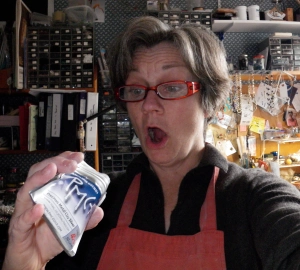
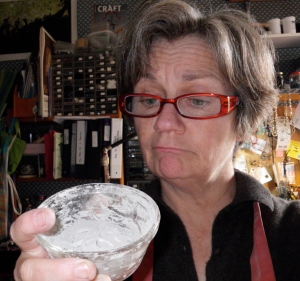
Time to re-hydrate my unfired scraps, so I can keep making silver beads to get ready for an upcoming trunk show. Below, one of my favorite tools. The coffee grinder. All sizes and shapes of unfired PMC mistakes go in here. Also all of the PMC dust I’ve saved from sanding.

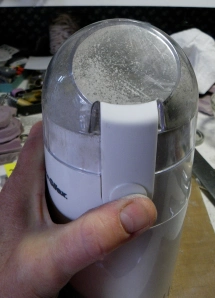
Ta da! Fluffy and finely ground!
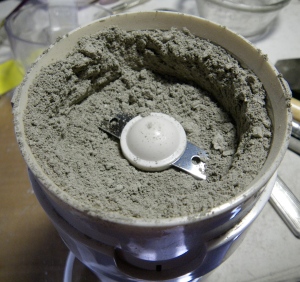
Add distilled water with a sprayer and stir until the clay pulls away from the sides of the bowl. Don’t add too much water or the clay will get too sticky to work with.

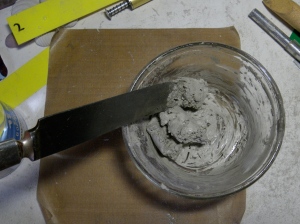
This part I added to my re-hydration routine after learning how to mix bronze and copper clay powder from Hadar Jacobson’s blog. Oil the inside of a notebook cover and roll the clay out flat. Keep doing this to condition it.
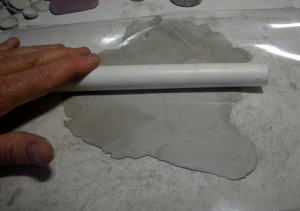
(Kind of a dorky photo…)
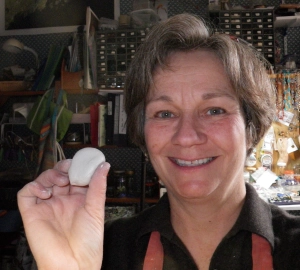
Look how much clay I mixed up compared to 45g of PMC+.
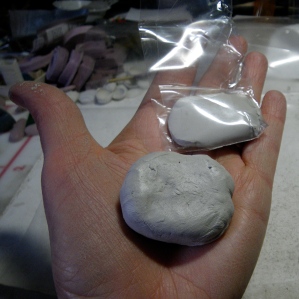
This really works for me in a pinch. The fired clay is more porous than clay fresh out of the package. If I am making pieces I need to solder after firing, I prefer fresh clay. But this reconstituted version works well for beads with a lot of rough texture, or pieces on which I will apply bits of PMC sheet. Below are the pre-fired pieces I was able to make from that big lump of re-hydrated clay scraps. (Thanks coffee grinder from Rite Aid! You were a bargain for $15!)
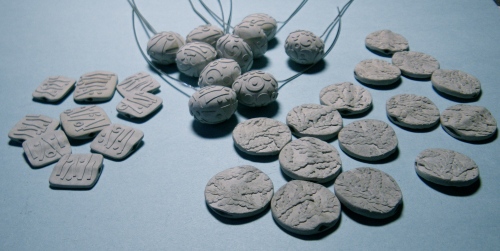

hey! you’re so cute…i love seeing your face!
i think you’ve just posted your first tutorial!!!!!
xoxo
LikeLike
Nothing like trying to take pictures of yourself to procrastinate from work!
I miss you Holly!
LikeLike
You are indeed the cute one!!..and very clever too.
LikeLike
Pingback: Little silver doodads « Barbara S Fernald Jewelry
Pingback: A tiny bead day | Barbara S Fernald Jewelry
Pingback: At last. Back to work with PMC. | Barbara S Fernald Jewelry
…love your blog Barbara! x
LikeLike
Thanks Sue!
LikeLike
Hello Barbara
Thanks for your tutorial. In the last paragraph you write “This really works for me in a pinch. The fired clay is more porous than clay fresh out of the package. …” Do you mean the reconstituted clay when you say “the fired clay”? I made a ring that didn’t turn out great and need to crumble & reconstitute the clay. Give the ring another go. I understand I should only do this once if making a ring, so knowing that the reconstituted clay would be more porous or textured would certainly help to know in advance.
Thanks for your help!
Pauline
LikeLike
Hi Pauline,
Sorry I wasn’t more clear with that. I meant that once I fired the reconstituted clay, the pieces were a little more porous than other fired pieces made from fresh (un-reconstituted) clay. I don’t make many rings, mostly beads and earring components. I would wonder about the strength of a ring made from reconstituted clay using this method. I know there are people who use a sieve to sift the crushed dry clay particles before rewetting them. I think having more uniform sized particles of dry clay might make for a less porous fired piece.
I have not yet tried reconstituting dried out 960 clay. (That’s the mix of PMC sterling with PMC3. Check Celie Fago’s website if you want to know more about it. because that clay is half sterling and half fine silver, it is much stronger than all fine silver. If I made rings, I would try that.) Good luck. I hope this helps!
LikeLiked by 1 person
Really great idea and helpful
LikeLike
Thank you Cheryl!
LikeLike